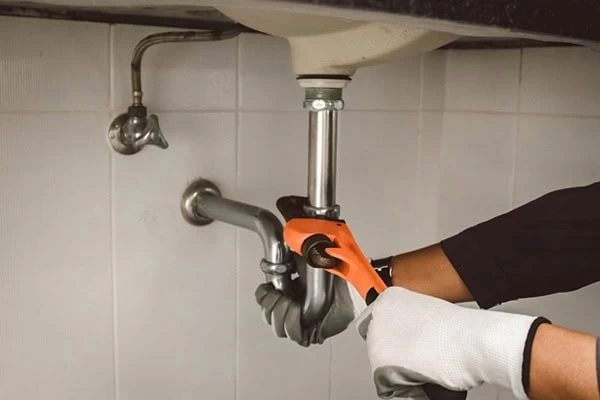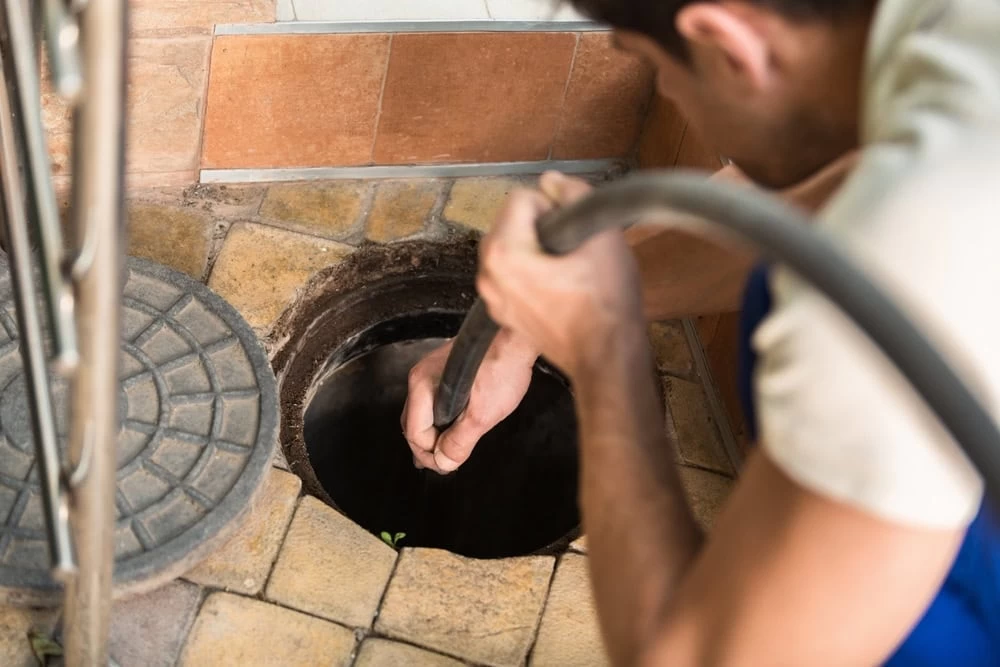Essential plumbing preparation steps that prevent renovation disasters and keep your project on track and on budget.
Share:

Summary:
Think of a pre-renovation plumbing inspection like an X-ray before surgery. You want to know what you’re dealing with before you start cutting into walls.
Most homes have plumbing surprises lurking behind finished surfaces. That 1980s bathroom might look fine on the surface, but the supply lines could be ready to fail. Your kitchen renovation could hit a sewer line that’s been slowly backing up for months.
A professional plumbing inspection reveals these issues when you can still plan around them, not when your contractor is standing in your half-demolished kitchen asking what to do next.

A thorough pre-renovation inspection goes way beyond checking if your faucets work. We examine every part of the system that could impact your project.
Water supply lines get tested for pressure, flow rate, and condition. This matters because new fixtures often need different pressure requirements than what you currently have. That rainfall showerhead you picked out needs serious water pressure to work properly.
Drain lines get scoped with cameras to check for blockages, root intrusion, or structural damage. You don’t want to discover a collapsed sewer line after you’ve already torn out your bathroom floor. Gas lines get pressure tested if you’re adding new appliances or moving existing ones.
The inspection also covers water heater capacity and condition. Adding a second bathroom or upgrading to a soaker tub might push your current water heater past its limits. Better to know this now than after you’ve committed to specific fixtures.
We also check shut-off valves throughout the house. Renovation work requires turning water on and off frequently, and old valves have a habit of breaking when you need them most.
Schedule your plumbing inspection before you finalize any renovation contracts or fixture purchases. This timing gives you maximum flexibility to adjust plans based on what you discover.
If the inspection reveals that your main water line needs replacement, that changes everything about your project timeline and budget. If your drain lines are in perfect shape but your supply lines need updating, you can plan the work to happen when walls are already open for other trades.
Getting the inspection done early also helps your general contractor give you accurate bids. Contractors hate plumbing surprises as much as you do because they throw off schedules and budgets. A contractor who knows exactly what plumbing conditions they’re working with can give you a much more reliable timeline and price.
Don’t wait until permits are pulled and materials are ordered. By then, discovering major plumbing issues becomes a change order nightmare that delays everything and costs significantly more to fix.
The inspection should happen after you’ve decided on your general renovation scope but before you’ve committed to specific fixture locations or types. This gives you room to adjust plans based on what’s actually feasible with your existing plumbing infrastructure.
Want live answers?
Connect with a CG Plumbing expert for fast, friendly support.
Once you know what you’re working with, it’s time to get your plumbing system construction-ready. This means addressing any issues that could cause problems during renovation and making sure everything can handle the demands of your new space.
The goal is eliminating any chance of plumbing failures while contractors are working. Water damage during renovation doesn’t just ruin your new materials – it can destroy structural elements and create mold problems that take months to resolve.

Start with a thorough drain cleaning of all lines that will see increased use during construction. Renovation work puts extra demands on your plumbing system that can push marginal drain lines over the edge.
Construction debris, dust, and increased usage from workers can quickly clog drains that were already running slow. A drain that takes thirty seconds to empty might seem fine now, but it won’t handle the extra load during renovation.
Professional drain cleaning removes buildup that could cause backups when you can least afford them. This is especially important for floor drains in basements or utility areas where contractors might be washing tools or equipment.
If your sewer line inspection revealed any issues – even minor ones – address them before construction starts. Tree roots, minor bellies in the line, or small cracks can become major problems when the system is under stress.
Consider having your main sewer line cleaned even if it seems to be working fine. Construction often means more people using your plumbing system, more debris going down drains, and higher chances of something going wrong. A clean sewer line has much more capacity to handle whatever gets thrown at it.
Don’t forget about less obvious drains like washing machine drains or utility sinks. These often become heavily used during renovation as contractors need places to clean equipment and dispose of water from various tasks.
Old supply lines and faulty shut-off valves cause more renovation delays than almost any other plumbing issue. When contractors need to turn water off to a specific area and the shut-off valve breaks, suddenly your whole house is without water until repairs are made.
Replace any galvanized steel supply lines before renovation begins. These lines are ticking time bombs that often fail when disturbed by construction vibration or when old shut-off valves are operated for the first time in years.
Install individual shut-off valves for each area being renovated if they don’t already exist. This lets contractors work on plumbing in one area while keeping water service to the rest of your house. It’s a small investment that prevents major inconvenience.
Test every shut-off valve in your house by turning it off and on completely. Valves that haven’t been operated in years often seize up or break when you need them most. Replace any that don’t turn smoothly or don’t completely stop water flow.
Consider installing a whole-house shut-off valve if you don’t have one that’s easily accessible. During major renovations, you’ll need to shut off water to the entire house multiple times, and having a reliable, easy-to-reach valve makes everything smoother.
Upgrade your water pressure regulator if you’re adding fixtures or appliances that need specific pressure ranges. Many older homes have pressure regulators that are either failing or set incorrectly for modern fixtures.
Smart homeowners in El Dorado County, Placer County, Sacramento County, and Amador County know that renovation plumbing isn’t a DIY project. The stakes are too high and the potential for expensive mistakes too great.
Professional plumbers understand how renovation timelines work and can coordinate with your other contractors to keep everything moving smoothly. We know local building codes and permit requirements that could impact your project.
Most importantly, we can spot potential problems before they become renovation disasters. When you’re ready to get your plumbing system renovation-ready, CG Plumbing has the experience and expertise to make sure your project stays on track and on budget.
Article details:
Share: